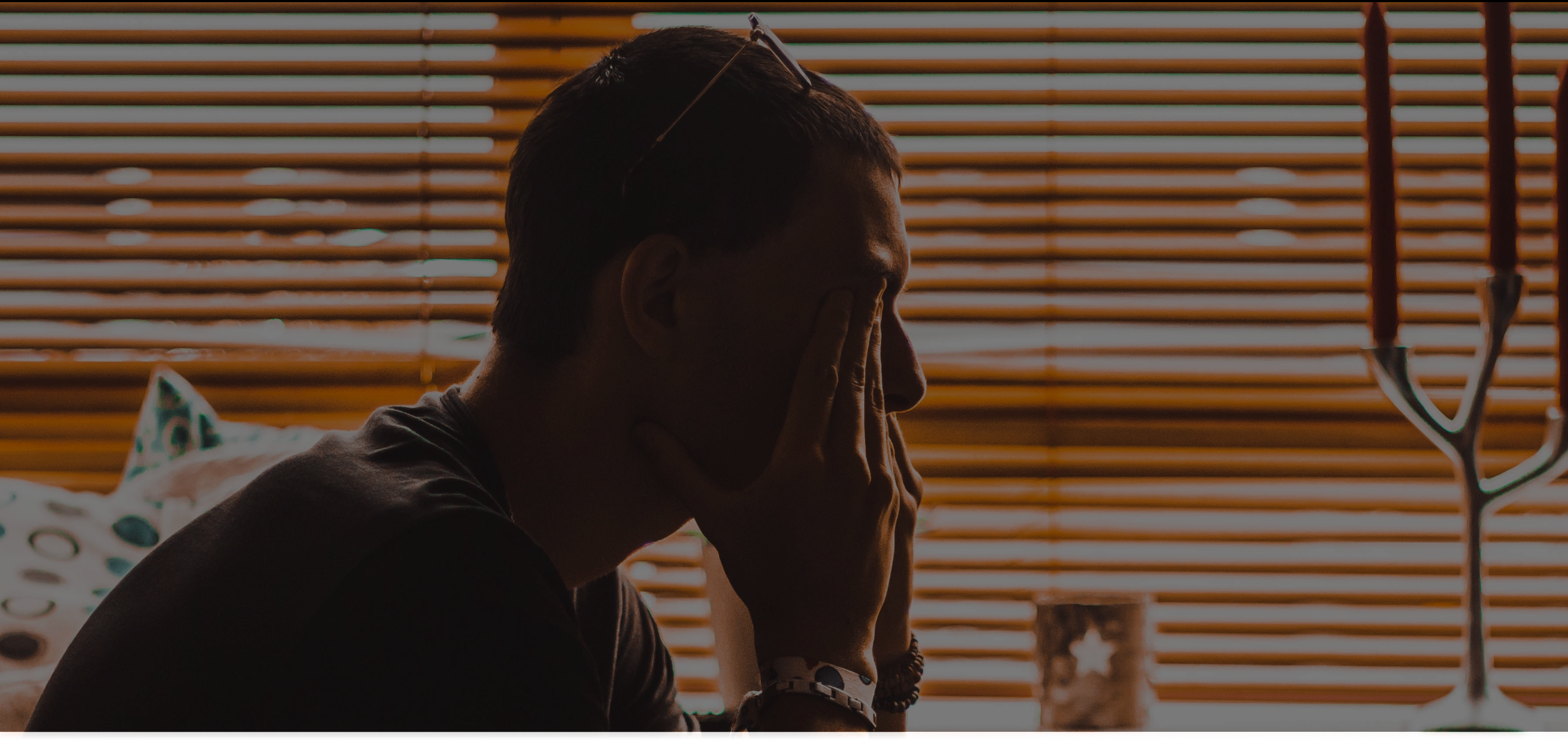by Tommy Carreras
No two stories of addiction are the same. Every person has a unique blend of genetics, biology, environment, and life experiences that can lead to an unhealthy relationship with a particular behavior or substance.
But, while the stories may be different, there is a neurological reality that underpins every addiction (and maybe even the modern human experience itself):
We’re all running from pain.
In her book Dopamine Nation, Dr. Anna Lembke explains an essential part of the human brain’s reward system and how it acts as a “seesaw” that seeks to balance pain and pleasure. Our brains are always trying to restore a sense of homeostasis throughout our bodies; in this reward system’s case, that balance is a healthy set point between pain and pleasure.
There is a built-in survival urge in all of us to avoid pain by seeking out pleasure. We subconsciously catalog behaviors and substances based on how strongly they push the seesaw in either direction toward pain or pleasure. We naturally crave and pursue the things that cause pleasure, just as we naturally withdraw from the things that cause pain.
The brain is usually perfectly capable of managing that balance, but it can also be hijacked. That’s when natural tendencies turn into destructive addictions.
Surges of pleasure shove our reward system out of balance. They are usually countered by a natural surge of pain that manifests as a craving. This constant back-and-forth can lead to an eventual “dopamine-deficient state,” rendering the brain incapable of producing healthy amounts of pleasurable neurochemicals without outside stimulation. That deficit state is fertile soil for a powerful substance or behavioral addiction.
But remember, pain and pleasure are not competing forces that act independently: they are two sides of a continuum that desires balance.
We wouldn’t so desperately desire pleasure if we could become more comfortable with pain. And that is why pain is so necessary to stay successful in recovery.
Here are three reasons to reexamine your relationship with pain and practical ways you can start.
Reason #1: Our Modern World is More Pleasurable than We Can Handle
Life in the modern world is bathed in comfort. Incredible achievements in medicine, technology, and science have changed our relationship with the world. Never before have human beings been able to live with so few threats, inconveniences, and discomforts.
While the pain of life has evaporated, our access to pleasure has skyrocketed simultaneously. Sugar, screens, air conditioning, and luxury are just a few of the bricks we’ve loaded onto our seesaws’ “pleasure” side, destroying our pain tolerance.
Even when we intentionally remove harmful and addictive substances or behaviors from our lives, our modern, frenzied, pleasurable world doesn’t allow us to find the proper setpoint of contentment.
Practical Tip #1:
Regularly abstain from everyday conveniences to experience reality a little more often. Take a cold shower. Walk instead of drive. Turn off the air conditioning. Take the stairs for a week. Turn off the screens for a few days. Intentionally detox from the overload of pleasure that unintentionally keeps you averse to pain.
Reason #2: Pain is not an IF. It’s a WHEN.
Even with all the ways we’ve learned to banish discomfort from the modern world, pain is inevitable. And even if you can avoid physical pain or a medical diagnosis, relational and emotional pain is certain.
You’ve likely heard that “stick and stones can break my bones, but words will never hurt me,” but that couldn’t be further from the truth.
Researchers at the University of Michigan had participants look at a picture of an ex-partner that had broken up with them and asked them to think about their feelings of rejection. Then they had the participants experience a sensation on their arms that mimicked a hot coffee spill. Both scenarios lit up all the same areas of the brain.
They learned that social rejection or loss hurts in the same neurological way physical pain does.
In a second experiment, the same research team found that even when participants knew that an instance of social rejection was utterly fake, their brains responded with a strong opioid release that mimicked the response to acute physical trauma.
Social rejection, unmet emotional needs, and broken trust are frequent and painful realities of life, often seen as unworthy of the attention and healing they deserve.
Our brains try to protect us from that genuine pain with surefire hits of seesaw-hijacking pleasure.
Practical Tip #2:
Capture, examine, and understand your negative emotions. Instead of disregarding them or chasing them away, turn to face them. Work hard to articulate the negative feelings you experience and try to understand their source.
Our emotions are messages, and without listening to those messages, we won’t be able to find solutions to the real problems hiding under the surface. Naming and sharing your feelings is a powerful way to lessen the intensity of big negative emotions and restore balance.
Reason #3: The Right Kind of Pain Unlocks Longer-Lasting Pleasure
With intention, we can unlock incredible potential for long-lasting, resilient pleasure: the kind that makes addictive behaviors and substances less and less attractive and supercharges your recovery.
Here’s how Dr. Anna Lembke describes this process in the brain:
“Pain leads to pleasure by triggering the body’s regulating mechanisms. The pleasure we feel is our body’s natural and reflexive physiological response to pain.”
By intentionally choosing appropriate pain levels that are specifically related to our growth and development, we become less vulnerable to pain and more capable of experiencing pleasure over time.
A great example of this phenomenon is physical exercise! While exercising, your cells experience toxic temperature levels, noxious oxidants, and oxygen deprivation. But the body responds to this toxicity by increasing mood-regulating neurotransmitters and producing new neurons, which reduce the likelihood of drug addiction.
The right amount of pain leads to a natural, lasting pleasure.
Practical Tip #3:
Do hard things that have long-term benefits, but treat the effort as a reward and keep the long-term effects in mind.
Be honest about how you feel and address the conflict in your life head-on. Honesty and relational tension are painful; they make us confront our fears and accept the consequences. But both are also necessary for relational health and recovery, even though their benefits are usually hard to see in the moment.
And try an ice bath or cold shower! A large body of research explains the long-lasting rewards of a cold plunge, and it’s worth the few minutes of pain.
Reevaluating Your Relationship with Pain
Whatever practical steps you take to move toward a healthy relationship with pain in your life, remember that your efforts work in your favor – not for punishment. Life in recovery is a long and winding road, and it’s normal to struggle with feelings we might initially label as “negative” at first glance. Dig deeper into those feelings and see what they’re trying to tell you.
As you incorporate appropriate amounts of pain and discomfort into your life, remember that it is for your good because you are worth it. Recovery is a constant journey, and exploring your relationship to pain is part of the process.
Reference
- Lembke, Anna. Dopamine Nation: Finding Balance in the Age of Indulgence. Dutton Books, 2021.
- Huberman, Andrew, “How To Control Your Sense Of Pain & Pleasure.” Huberman Lab, 9 August 2021, https://hubermanlab.com/how-to-control-your-sense-of-pain-and-pleasure/.




